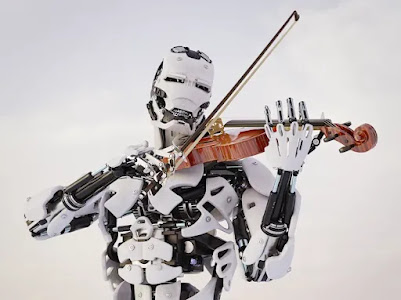The Aid Of AI In Soccer
What is a machine? A machine is anything that reduces human effort. Anything that saves time or simplifies work is a machine. It’s a warm day, press a button, get a blast of air. The fan… A machine! Speak with your friends miles away with just a phone call. Speak to friends or family miles away. The phone… A machine! Compute millions in a second. The calculator… A machine! We’re surrounded by machines.
The future is all about Artificial Intelligence (AI) and Data Analysis. AI based technology helps humans reduce effort and error, and this technology has been gained by FIFA (The International Governing Body of Soccer, Futsal, and Beach Soccer) as well to reduce errors by referees in order to make correct; potentially game changing decisions. Not only is this automated technology reliable, it’s what the fans have been asking for since ages.
Offside is one of the most critical decisions of the game to make for the referee. Scott Fujita best explains offside as the result of an attacking player getting closer to the opponent’s goal line than both the ball and the last defender. As per FIFA, a player is penalized for offside “at the time the ball is touched or played by one of his teammates.” This means that the player must be in front of the last defender when the ball is passed to him. Every inch of the player’s body, heat and feet must be following the rule or else they will be deemed offside.
Offside referees haven’t always been able to deliver with the most accurate decision, which sometimes led to false calls in the last few minutes of some critical international games. That is where AI kicked in. The AI based technology uses automated ball detection and creates three dimensional models of a player’s position instantly. An article by ESPN states that these automated systems help improve the accuracy of the kick point using tracking data and sensor technology from camera systems, while a players skeleton will be modeled to identify which part of the player’s body is furthest forward. Even though AI is being used it’s still called semi-automated because in the end, the final decision is in the hand of the referee. Offside lines are proposed by the system as shown below, but the referee still validates the decision. The system provides precision rather than the decision, and precision is what counts while making decisions.
Another hard task for the referees; on some occasions, was to determine whether the goal had been scored or not. Manytimes, the goalkeeper stops the ball exactly on the goal-line or, sometimes, maybe on the edge of it. This causes referees to be unsure while making decisions and sometimes leads to referees being biased. In order to avoid this confusion and be more precise with judgment, GLT (Goal-Line Technology) was introduced. GLT was enacted at the 2014 world cup in order to help referees with crucial goal-line decisions.
Stadiums using GLT contain feature sensors in both goal-posts as well as the cross-bar, which picks up a light chip inserted in the ball. If the ball crosses the line completely, a signal is transmitted to the watch worn by the match referee, and the official is notified with a color-coded symbol in just a second.
To make this GLT even more reliable and accurate, there are seven cameras set up facing each goal. These cameras are connected to a computer which analyzes images from each camera and basically filters out the ball. The system comprises a small server farm that receives data from the seven cameras that record each goal, and is able to calculate the ball’s position with a precision of 5mm. This data is used to overlay virtual graphics to the real view of the pitch as well as to create complete virtual animations that are very accurate.This allows accurate decisions to be made in real time. The figure below shows the virtual animation of a ball crossing the goal-line portrayed through the computer.
Like every automated system, these have their pros and cons as well. Although this proves to be more accurate than the dependence of the human eye and more efficient than video replay, the element of human decision is a crucial part of the game and atmosphere of the sport. Apart from that, this GLT is very costly. It costs almost $260,000 per stadium to get GLT installed for a league and another $4,000 per game. To this point, there are many cons to GLT but the pros still stand firm. Who knows where this AI will take the sport. Will there be robotic referees? How would the robots make decisions? How would they make decisions to check if a foul has been committed or not? Will there be robots replacing human players?The inhuman spiral continues…
